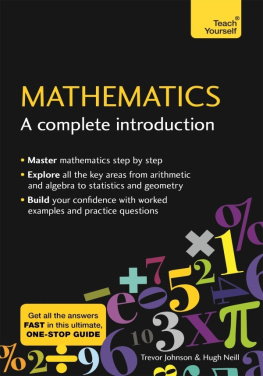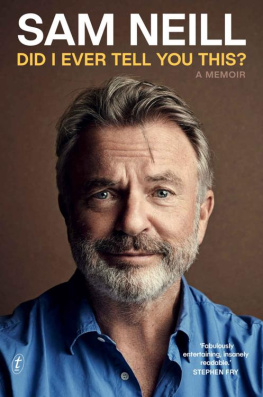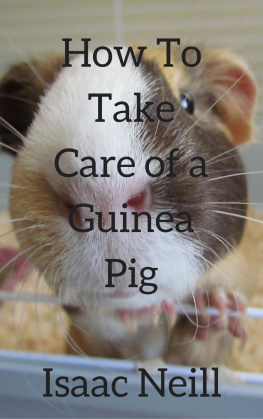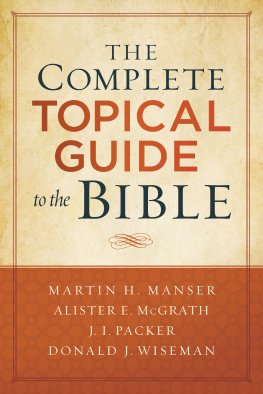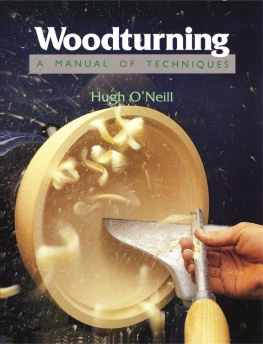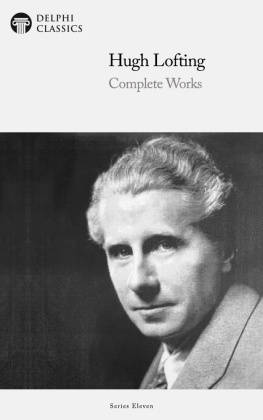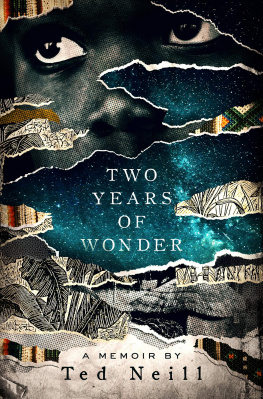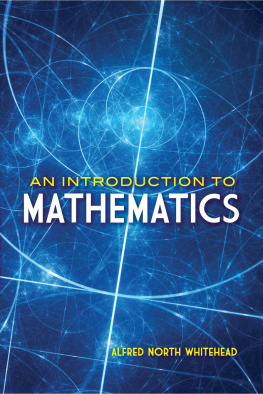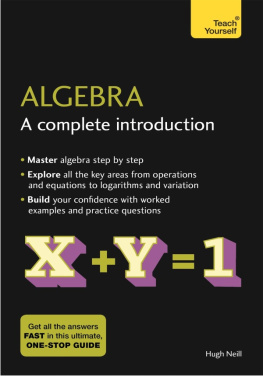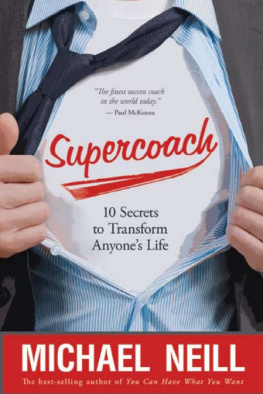MATHEMATICS
A complete introduction
Trevor Johnson and
Hugh Neill
Contents
Welcome to Mathematics:
A complete introduction!
Welcome to Mathematics: A complete introduction!
Mathematics: A complete introduction aims to give you a broad mathematical experience and a firm foundation for further study. The book will also be a useful source of reference for homework or revision for students who are studying a mathematics course.
This book is primarily aimed at students who do not have teacher support. Consequently, the explanations are detailed and there are numerous worked examples. Throughout this new edition are author insight boxes which provide additional support, including memory aids and tips on how to avoid common pitfalls. Also new to this book are end of chapter summaries of all the key points and formulae.
Access to a calculator has been assumed throughout the book. Generally, a basic calculator is adequate but, for , a scientific calculator, that is, a calculator which includes the trigonometric functions of sine, cosine and tangent, is essential. Very little else, other than some knowledge of basic arithmetic, has been assumed.
To derive maximum benefit from Mathematics: A complete introduction, work through and dont just read through the book. This applies not only to the exercises but also to the examples. Doing this will help your mathematical confidence grow.
The authors would like to thank the staff of Hodder Education for the valuable advice they have given.
Trevor Johnson, Hugh Neill
Introduction
Mathematics is probably the most versatile subject there is. It has applications in a wide range of other subjects from science and geography through to art. In science, without mathematics there would be no formulae or equations describing the laws of physics which have enabled the technology that we use each day to develop. Mathematics enables psychologists to find out more about human behaviour, looking for correlations between sets of statistics. Doctors and pharmaceutical companies use mathematics to interpret the data resulting from a drug trial. An understanding of mathematics is essential in architecture and engineering. Mathematics is also used to model situations such as the stock market or the flow of traffic on motorways.
Mathematics is also intrinsically beautiful. Many famous artists used mathematics as a basis for their work Kandinsky made extensive use of geometry in his paintings and Escher is famed for his complicated tessellations and optical illusions. Mathematics also occurs naturally. For example, the patterns on the wings of a butterfly or moth are symmetrical, and the pattern of seeds on a sunflower head, the scales of a pinecone and the spiral of a snails shell all follow the same sequence of numbers called the Fibonacci sequence.
Maths really is ubiquitous and having an understanding of the basics of mathematics is invaluable to many aspects of modern life.
The word mathematics originally comes from the Greek for knowledge and science. To most people maths means arithmetic addition, subtraction, multiplication and division which are the building blocks for maths. Without these we couldnt interpret large sets of data, solve an equation or work out the area of a shape.
We live in a technological age and mathematics underpins all of this technology. It is hard to think of an aspect of modern life that is not reliant in some way on technology and therefore mathematics. Mathematics is also intrinsic to many careers: civil engineers rely on mathematics to work out whether the bridge they are building will actually support a given load and surveyors use trigonometry to calculate the distance between two points. Insurance companies use complex probability tables for their life assurance policies, the self-employed use percentages to file their tax returns, while pharmacists use formulae to work out the correct dosage for a particular drug and sportspeople are constantly using forms of intuitive mathematics.
Many people lack confidence in mathematics and feel that they are not very good in this subject. It seems acceptable to say, Oh, Im hopeless at maths, in a way that would not be accepted about reading or writing. However, without realising it, every day we are using maths. Working out which box of cereal is best value for money involves proportion. Placing a bet on a horse requires an understanding of probability. Calculating the best mobile phone tariff involves using simple formulae. Working out how much tax you should pay for your tax return needs a good grasp of percentages. When reading the newspaper we are bombarded with statistics results of surveys, charts and graphs which we need to be able to interpret so that we can make informed choices about our daily lives.
Maths is also fun, a fact which is often forgotten! Most newspapers run a daily maths type puzzle: Sudoku, Futoshiki and Kakuro are three popular puzzles which involve numbers, logical thinking and problem-solving skills. Researchers are discovering more and more health benefits from solving the ubiquitous brain training maths style puzzles. Many of these puzzles are not only fun but are also positively good for you. Recent research suggests that keeping the mind stimulated with activities such as Sudoku and crossword puzzles may help prevent Alzheimers disease and can improve your cognitive abilities.
In todays society being numerate is at least as important a skill as being literate. The key mathematics skills such as basic numeracy and problem solving are essential to many careers and highly valued by employers. Being proficient in mathematics has a positive impact on career development and employability, as well as self-esteem. Mathematics: A complete introduction takes you through worked examples and has carefully graded exercises designed to improve confidence and problem-solving skills.
Number
In this chapter you will learn:
about place value
about the four operations of arithmetic
about the order in which arithmetic operations should be carried out
about some special numbers.
1.1 Introduction place value
Over the centuries, many systems of writing numbers have been used. For example, the number which we write as 17 is written as XVII using Roman numerals.
Our system of writing numbers is called the decimal system, because it is based on ten, the number of fingers and thumbs we have.
The decimal system uses the digits 0, 1, 2, 3, 4, 5, 6, 7, 8, 9.
The place of the digit in a number tells you the value of that digit.
When you write a number, the value of the digit in each of the first four columns, starting from the right, is
Thus, in the number 3652, the value of the 2 is two units and the value of the 6 is six hundreds.
The decimal system uses zero to show that a column is empty. So 308 means three hundreds and eight units; that is, there are no tens. The number five thousand and twenty-three would be written 5023, using the zero to show that there are no hundreds.





